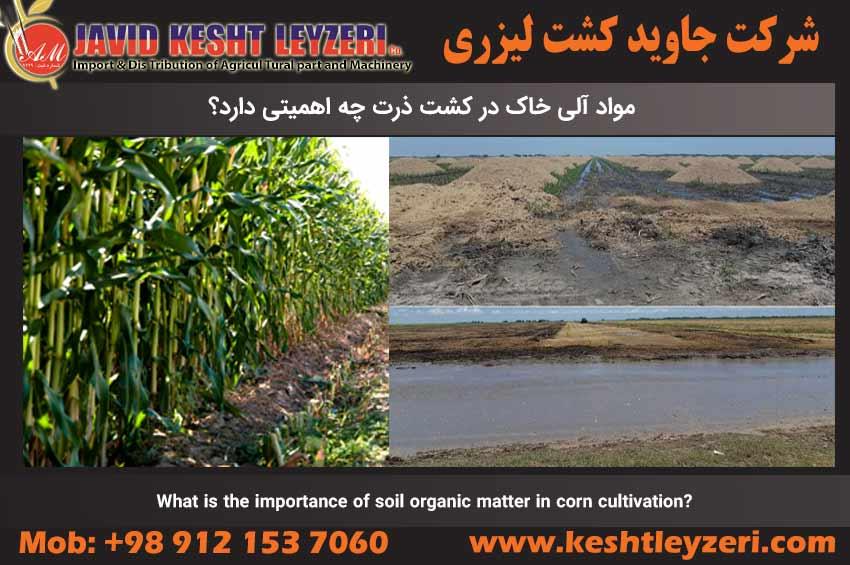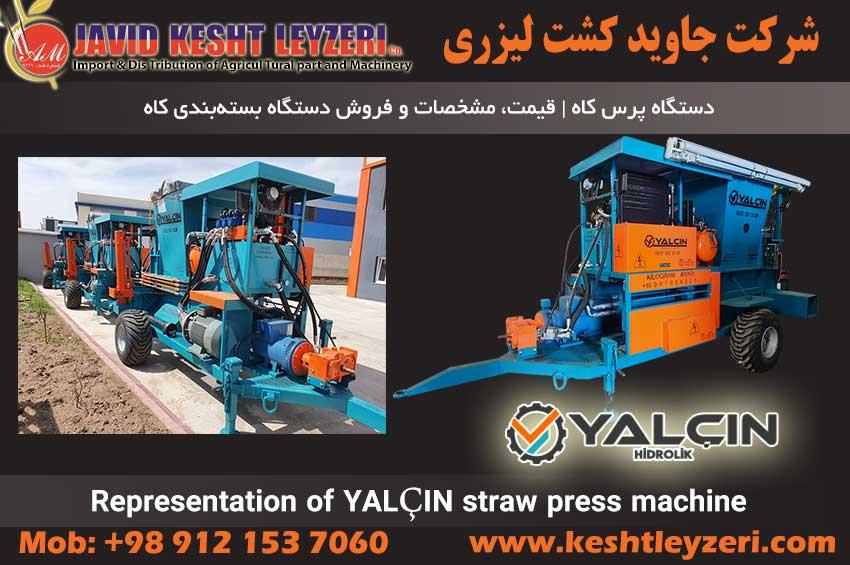
What is the importance of soil organic matter in corn cultivation?
javid keshtleyzeri Co.ltd
Why is soil organic matter important?
In what ways is soil organic matter increased?
What is the no-tillage or low-tillage method of increasing soil organic matter?
How do cover plants work as a way to increase soil organic matter?
How does organic soil amendment work to increase soil organic matter?
In the following, the above cases will be examined.
Why is soil organic matter important?
It is obvious that water is increasingly becoming the most limited natural input in our country. However, by increasing soil organic matter, farmers can improve water storage capacity. Soils containing high organic matter, like sponges, can absorb and hold water during rainfall and deliver it to plants during drought. In fact, soil organic matter can increase soil water holding capacity. For example, the United States Department of Agriculture has stated that "every 1% increase in organic matter in U.S. cropland soils can store water equivalent to 150 days of Niagara Falls discharge."
Increasing organic matter can be the key to improving soil health; Because the importance of soil health is so high that Franklin Roosevelt, one of the past presidents of the United States, said: "A nation that destroys its soil has destroyed itself." However, increasing soil organic matter and improving soil health may be a challenge in areas where soils are sandy and organic matter poor. Mineral soils, which are generally high in sand and low in organic matter, reduce their water holding capacity and ability to retain nutrients.
Soil organic matter is a source of nutrients for plants that supports the biological and physical properties of soil. From an economic point of view, organic soils are more productive than mineral soils. Profits on organic soils are estimated at $400/ha, while mineral soils yield only $70/ha. By using agricultural methods that increase soil organic matter, the water holding capacity of soil can be increased. According to conservative estimates, every 1% increase in soil organic matter will help store 16,500 to 22,500 gallons more water in the top 30 cm of topsoil per acre, equivalent to 150 to 210 cubic meters of water per acre.
Most farmers, by adopting conservation measures, can increase their soil organic matter in 3 to 10 years. When the organic matter of the soil is low, there is a need for large amounts of fertilizer and water to prevent the lack of nutrients and water to feed the plants. Therefore, nutrients are washed by runoff and enter surface and underground waters, which can cause many problems for the health of humans and other organisms.
Also, climate change has already affected weather patterns and caused more risk in agriculture such as drought and flood, which itself causes more soil erosion and destruction. Organic matter can hold up to ten times its weight in water because organic matter particles have a charged surface that attracts water. Recent studies have shown that organic matter content and soil water holding capacity are positively and strongly related to each other. For example, the weight water holding capacity of a silt loam soil containing 4% organic matter is more than twice that of the same type of soil with 1% organic matter. This shows that soil organic matter should be considered as a key factor in agricultural productivity that can have a significant impact on water conservation and proper use.
In what ways is soil organic matter increased?
Conservation tillage methods such as no tillage, low tillage, use of cover plant with a lot of plant residues and diversity in crop rotation are among the measures that increase soil water holding capacity and improve organic matter and soil health.
What is the no-tillage or low-tillage method of increasing soil organic matter?
Plowing breaks up small clods of soil and reduces the space between them that is needed for air and water to pass through. Due to heavy tillage, soil aeration is increased and microbial activity is intensified, which causes the consumption of soil organic matter by bacteria to accelerate. In unhealthy soils with weak structure and low organic matter, this will cause a further decrease in soil organic matter and soil water storage. This can be a problem in harsh weather conditions. When heavy rain occurs, water and suspended particles are removed from the reach of the plant through seepage deep into the soil or runoff, which causes further soil impoverishment.
On the other hand, no-till systems help to improve soil structure, and the combination of high-residue cover crops between planting seasons and the main crop can increase soil organic matter and reduce erosion.
How do cover plants work as a way to increase soil organic matter?
Studies have shown that cover plants have a significant effect on improving soil health. These plants reduce erosion and increase plant residues in the soil. But the greatest impact of cover crops may be in the subsurface environment it creates. Cover plants develop living and active roots that establish a symbiotic relationship with fungi. These symbiotic relationships are essential for the formation of a healthy soil. Different types of mycorrhizal fungi can be found in symbiosis with 90% of the world's plants. Fungi are unable to produce their own food, so they attach to living roots. These living roots provide carbohydrates (sugar) to the fungi. Instead, fungi provide nutrients and water from the soil to the roots. The fungi then release polysaccharides and sugars into the soil that feed the soil bacteria. On the other hand, soil bacteria also provide nutrients to fungi
provide mycorrhizae that are finally transferred to the living root.
In this situation, a more balanced ecosystem is formed in which the bacterial population is fed at a constant rate and does not consume the organic matter in the soil. Research has shown that a combination of temperate, tropical, broadleaf and leguminous cover crops is always best to maximize the amount and diversity of mycorrhizal fungi populations.
How does organic soil amendment work to increase soil organic matter?
One of the most effective and affordable methods of soil amendment is the use of crop residues such as plant residues that remain in the ground after harvest. For many years, plant residues have been used as the main source of organic matter, livestock and poultry litter, fuel and biofuel. The use of residues such as bagasse, rice paddy and palm leaves as soil amendments in sandy soils is used to increase the potential of soil organic matter. Leaving these materials in the soil and their natural decomposition will increase the organic matter in the soil.
Which method is more suitable for increasing the organic matter of the soil?
Considering the importance of the presence of organic matter in the soil, a question has arisen whether in the system of successive corn cultivation, the return of a large amount of plant residues to the soil will increase the organic matter of the soil or not? Surprisingly, the results of a 15-year long-term experiment showed that soil organic matter did not increase under continuous corn cultivation, but increased during a four-year rotation of corn, corn, soybeans, and wheat.
In this experiment, which began in 1993, it has been observed that the percentage of organic matter in a basic sandy loam soil of 1.5% has not changed significantly after 15 years of continuous corn cultivation. But in the same soil, in a four-year periodic system including corn, corn, soy and wheat, a significant increase in organic matter has been observed. This increase is also increased by using cover plants in the seasons between crops (Figure 2).
There are several possible explanations for this observation:
A) Microorganisms in soils with low organic matter (1.5%) may have limited carbon resources and therefore have a greater tendency to degrade corn residues. In other words, in soils with poverty of organic matter, the rate of consumption of residues by bacteria is higher and the organic materials obtained from residues are removed faster.
Regarding b) the fact that the variety of plant residues can help to better preserve the residues in the soil and increase soil organic matter, it has been proven that this variety and quality of biomass inputs can also help to store carbon better.
In the case of c) the use of living cover on the soil in rotational cropping systems, especially when using cover plants, will be longer than in the continuous corn cropping system. Considering that the corn plant has roots in the soil for only about 5 months in a year, which becomes 20 months in four years, but in a four-year rotation including corn, corn, soy, and wheat, the soil has a living cover for about 33 months. Also, adding cover plants such as red clover alternately will create a living cover for up to 40 months in four years. It seems that the continuous living soil cover is likely to play an important role in creating more organic matter in the soil over time (Figure 3).
In the case of d) corn grown in the northern regions of the globe, due to resource limitations, such as sunlight, is faced with sending more dry matter to the seed. These resource limitations cause a physiological response in crop plants, causing plants, such as corn, to send more dry matter from leaves and stems to the seed to fill their seeds. This makes the plant residues left in the field to have a lower carbon content and therefore not effective in increasing soil organic matter. In other words, in the said experiment, the harvest index was around 59%, while this value should be around 50%. This shows that the weight ratio of the harvested seed to the weight of the remaining branch and leaf was much higher than usual. Therefore, due to light limitations in some areas, the corn plant produces less residues, and this issue can be a reason for the lack of increase in soil organic matter in successive corn cultivation systems.
In recent years, the awareness of environmental aspects and soil protection among farmers and the scientific community is increasing. This issue has led to more interest in identifying sustainable methods of soil and water conservation in the production of agricultural products.






